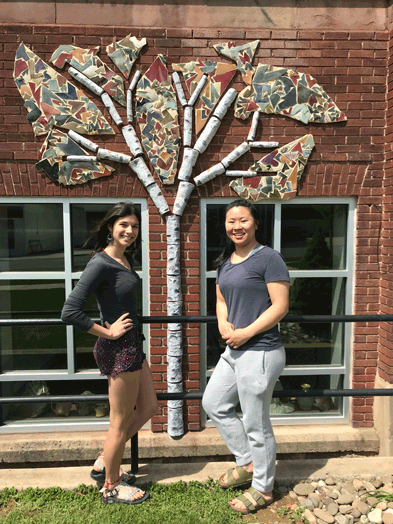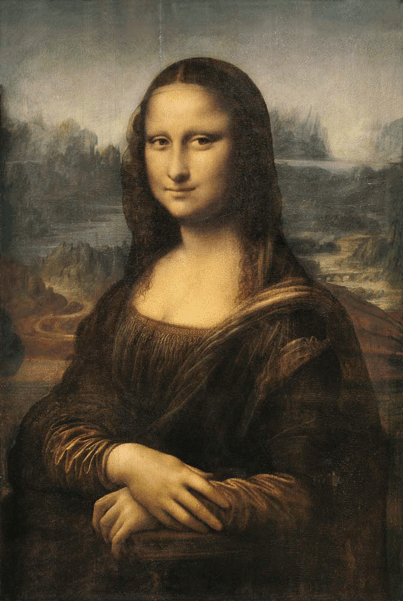“Study the science of art. Study the art of science. Develop your senses–learn how to see. Realize that everything connects to everything else”. -Leonardo Da Vinci
Artists are an eccentric group of people, for the occupation attracts individuals from all different backgrounds. Unfortunately, modern academic disciplines are separated and encouraged to diminish one another in the spirit of competition. Broad subjects like art and science are consistently juxtaposed to belittle each other. However, some of the most intelligent, successful, and creative humans in history and present-day fused art and science in their studies. As a society, it would be beneficial to combine arts and sciences; for, the best results when problem-solving or creating comes from the utilization of our entire repository of knowledge across all disciplines.
In 1834 William Whewell coined the term “scientist.” This word identified people who studied all sciences, including art. If the original intention of “scientist” was to include all scientific studies, including art, then why do education systems and societies alike try to compare and contrast arts and sciences in a negative manner? For the majority of my life, I have been an art student. In high school, I was an art enthusiast, taking every visual art, English, and singing class I could fit into my schedule. It’s not that I disliked or was bad at sciences, I just felt I could express myself and exercise my brain better in art classes. In my college career, I followed a similar path by majoring in English Literature and Professional Writing and minoring in Fine Arts (specifically ceramics). However, around my senior year at Juniata College, it dawned on me that my best accomplishments happened when I used my entire breadth of knowledge.

As a ceramicist, I quickly learned the value of meshing artistic and scientific knowledge. In the Juniata College ceramics program, when you reach upper-level classes, you gain an in-depth knowledge of how science interacts with artistic expression and craft. By the end of my Freshman year, I was learning the chemistry behind glaze and clay making. There are five main components to a ceramics glaze: flux, silica, alumina, colourants, and modifiers. The materials that fall into the five categories are typically found on the periodic table. As artists we are taught about how silica, a type of sand, turns into glass once heated to cone 10 in a kiln. We learn about how flux is an ingredient in a glaze that helps the silica melt and turn into a glass. Each glaze is a unique and complex formula that an artist creates. Clay bodies are treated in a similar manner with formulas and specific ingredients. Ceramicists have to use science when creating. Some of the best ceramicists use that to their advantage; they do experiments with their glazes and clays to find out how to push scientific and artistic boundaries.
Example Glaze Recipe: Majolica
Cone 05:
Frit 3124-66.6
F-4 or Minspar 200-23.0
Feldspar
EPK-2.3
Neph sy-8.1
--------------------
100.0
+tin-4
+zircopax-9
+bentonite-2
In addition to understanding the chemical buildup of ceramics, the artist must have an understanding of physics and engineering if they want to make truly spectacular and aesthetic pieces. In my sophomore year at Juniata College, I was in “Advanced Ceramics”. The class was structured so students proposed their own projects, and could explore different areas of interest. Juniata College is widely known for our prestigious science programs. As a student, sometimes I felt as if the ceramics program was forgotten within the community. I started brainstorming unique projects that would draw attention to the Juniata art community. I was inspired by an article I read about the world’s largest (by mass) living organism, Pando, a gigantic grove of quaking aspens in Utah. Aspens have the ability to reproduce asexually through their root system. In Utah, a grove of 47,000 aspen trees all carrying identical genetic makeup covers 106 acres. The single male parent tree has been reproducing for thousands of years. Pando, Latin for “I spread” is a community, when one tree is affected the entire root system feels the impact. Moreover, because they are quaking aspens and they share a single root system, it is believed the trees talk to one another.
I chose Pando as my inspiration to draw attention to the ceramics studio. I only had one month to complete the experiments, design, and construction of my project so I asked my fellow student to help me. Together we built our community tree. An eight-foot tree completely constructed out of Cone 10 clay, glaze, cement backer board, and a little bit of wood is installed on the outside of Juniata College’s business and ceramics building. In the first two weeks, we simply conducted experiments. We tested which clay would be the most stable in construction and what tools/techniques created the most realistic textures. We experimented with different leaf shapes and had to break things down into geometry because we wanted it to be abstract. Engineering was used when deciding how the trunk was to be stabilized against the brick building. Construction knowledge for tiling came in handy when choosing the backer board for the leaves. We had to take into consideration environmental factors because the tree is a permanent installation in the Pennsylvania outdoors, completely exposed to the fluctuating temperatures and elements. Only weeks later, Kristina and I had built an installation in honour of the strength, love, and life within the Juniata art community. Yet, with all the scientific equations, problem-solving, and creative thinking we conducted, many would still not qualify us to be scientists.
In Western schools we are taught about the greats like Leonardo da Vinci, Albert Einstein, and Steve Jobs. Each of those individuals was a scientists and artists and many of their great scientific inventions were inspired by artistic thinking. The Mona Lisa, one of the most valued and studied paintings in history, was created by da Vinci, an artist and scientist. The Mona Lisa is the culmination of a lifetime of Leonardo da Vinci’s curiosity of anything and everything. Da Vinci’s schooling was unique; he was self-taught in almost everything he learned because he was not allowed in public school from being born out of wedlock. He spent a large portion of his life studying the human eye. Da Vinci discovered that the retina sees details and the edges see shadows and shapes. Over the span of multiple years and many layers of paint, Leonardo da Vinci slowly created the Mona Lisa using his scientific knowledge of how the human eye works. Many viewers of the infamous painting believe that Mona Lisa’s smile moves and her eyes follow them. This phenomenon occurs thanks to how da Vinci strategically painted shadows and highlights to trick the viewers’ eyes giving the painting the illusion of movement or life.

In addition to the Mona Lisa, da Vinci is also credited for significant findings in the understanding of flying. Leonardo da Vinci was obsessed with streams and air currents. He would sit next to a stream for an entire day sketching how the water broke over rocks and ran over others. He would sketch air currents interacting with bird’s wings. This artistic fascination drove him to want to understand them mathematically. He noticed in his sketches that “...air currents formed little flurries when they went over the curved wings of the birds and realized that they help keep the bird aloft, something we now know about airplanes”. Da Vinci’s drive to think both scientifically and artistically allowed him to create some of humanity’s most significant accomplishments.
Similarly, Albert Einstein and Steve Jobs, both extremely talented scientists believed in the importance of creativity being merged with scientific thought. When speaking about the creation of Apple technology Jobs said, “It's in Apple's DNA that technology alone is not enough. It's technology married with liberal arts, married with the humanities, that yields the results that make our hearts sing”. In countless interviews, Steve Jobs would refer to himself as an artist first and businessman second. It was the respect he held for the arts and creativity which led him to his significant accomplishments. Albert Einstein, one of the greatest physicists and an amateur violin and piano player also believed in the value of artistic thinking. His famous statement “Imagination is more important than knowledge” rings true today. The imagination, the curiosity of Leonardo da Vinci, Albert Einstein, and Steve Jobs is what pushed them to want to know more and create the unthinkable.

The cliche, “Those who do not learn history are doomed to repeat it” resounds in my head. What if we turn that cliche upside down and take this as an opportunity to learn from history and hopefully repeat it. Challenge those who diminish arts programs with evidence that historically arts and sciences thrive together. Challenge yourself to embrace your imagination and curiosity. Next time you are going about your day and you have one of those off the cuff questions pop into your head like “why is the sky blue?” welcome that curiosity and answer that question with the diversity of knowledge you carry. We cannot all solve complex math equations or paint a Mona Lisa, but we can all encourage and value curiosity, a love for learning, and the fusion of art and science.
